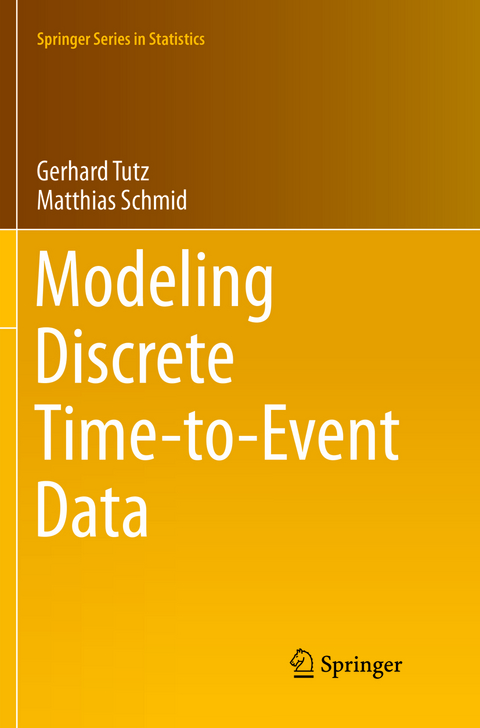
Modeling Discrete Time-to-Event Data
Springer International Publishing (Verlag)
978-3-319-80285-5 (ISBN)
This book focuses on statistical methods for the analysis of discrete failure times. Failure time analysis is one of the most important fields in statistical research, with applications affecting a wide range of disciplines, in particular, demography, econometrics, epidemiology and clinical research. Although there are a large variety of statistical methods for failure time analysis, many techniques are designed for failure times that are measured on a continuous scale. In empirical studies, however, failure times are often discrete, either because they have been measured in intervals (e.g., quarterly or yearly) or because they have been rounded or grouped. The book covers well-established methods like life-table analysis and discrete hazard regression models, but also introduces state-of-the art techniques for model evaluation, nonparametric estimation and variable selection. Throughout, the methods are illustrated by real life applications, and relationships to survival analysis in continuous time are explained. Each section includes a set of exercises on the respective topics. Various functions and tools for the analysis of discrete survival data are collected in the R package discSurv that accompanies the book.
Gerhard Tutz is a professor of statistics at the Department of Statistics at the University of Munich. He has published several books with Springer.Matthias Schmid is a professor of Medical Biometry, Informatics and Epidemiology at the University of Bonn. He received his diploma (2004) and his Ph.D. (2007) in statistics at the University of Munich and his habilitation (2012) in biostatistics at the University of Erlangen. Before working in Bonn, he was professor of computational statistics at the Department of Statistics at the University of Munich (2013-2014).
Introduction.- The Life Table.- Basic Regression Models.- Evaluation and Model Choice.- Nonparametric Modelling and Smooth Effects.- Tree-Based Approaches.- High-Dimensional Models - Structuring and Selection of Predictors.- Competing Risks Models.- Multiple-Spell Analysis.- Frailty Models and Heterogeneity.- Multiple-Spell Analysis.- List of Examples.- Bibliography.- Subject Index.- Author Index.
"Modeling Discrete Time-to-Event Data provides an excellent overview of a field that is underrepresented in the literature. At what it aims to do, striking a balance between theory and practice, this book does a great job. Its readers will understand not only what to do, but also how to do it. I believe that this book can easily find a place on the shelf of statisticians who have an interest in survival analysis." (Theodor Adrian Balan, Biometrical Journal, Vol. 61 (1), January, 2019)
“Modeling Discrete Time-to-Event Data provides an excellent overview of a field that is underrepresented in the literature. At what it aims to do, striking a balance between theory and practice, this book does a great job. Its readers will understand not only what to do, but also how to do it. I believe that this book can easily find a place on the shelf of statisticians who have an interest in survival analysis.” (Theodor Adrian Balan, Biometrical Journal, Vol. 61 (1), January, 2019)
| Erscheinungsdatum | 05.03.2022 |
|---|---|
| Reihe/Serie | Springer Series in Statistics |
| Zusatzinfo | X, 247 p. 58 illus., 3 illus. in color. |
| Verlagsort | Cham |
| Sprache | englisch |
| Maße | 155 x 235 mm |
| Gewicht | 3985 g |
| Themenwelt | Mathematik / Informatik ► Mathematik ► Computerprogramme / Computeralgebra |
| Mathematik / Informatik ► Mathematik ► Wahrscheinlichkeit / Kombinatorik | |
| Sozialwissenschaften ► Soziologie ► Empirische Sozialforschung | |
| Schlagworte | Additive Models • Competing Risks • Continuation ratio model • Discrete frailty model • Discrete hazard function • Discrete hazard model • discSurv • Generalized estimation equations • Goodness-of-Fit • Gradient boosting • Interval censoring • Life tables • Multiple spells • Penalized regression • Recursive Partitioning • Sequential methods in item response theory • Smooth effects • Survival Data • Survival functions • Time-dependent AUC • Time-to-Event Data |
| ISBN-10 | 3-319-80285-2 / 3319802852 |
| ISBN-13 | 978-3-319-80285-5 / 9783319802855 |
| Zustand | Neuware |
| Haben Sie eine Frage zum Produkt? |
aus dem Bereich


